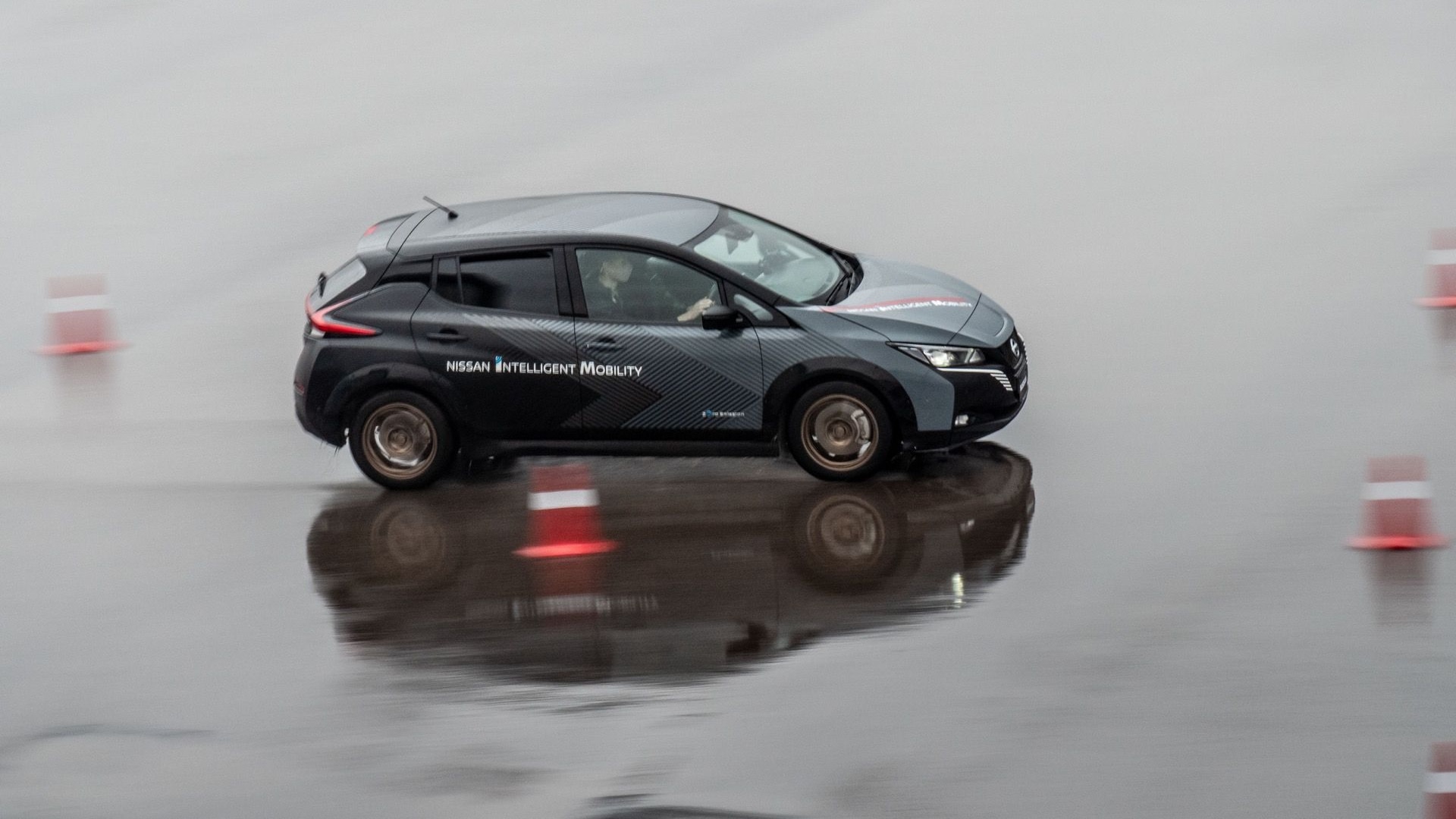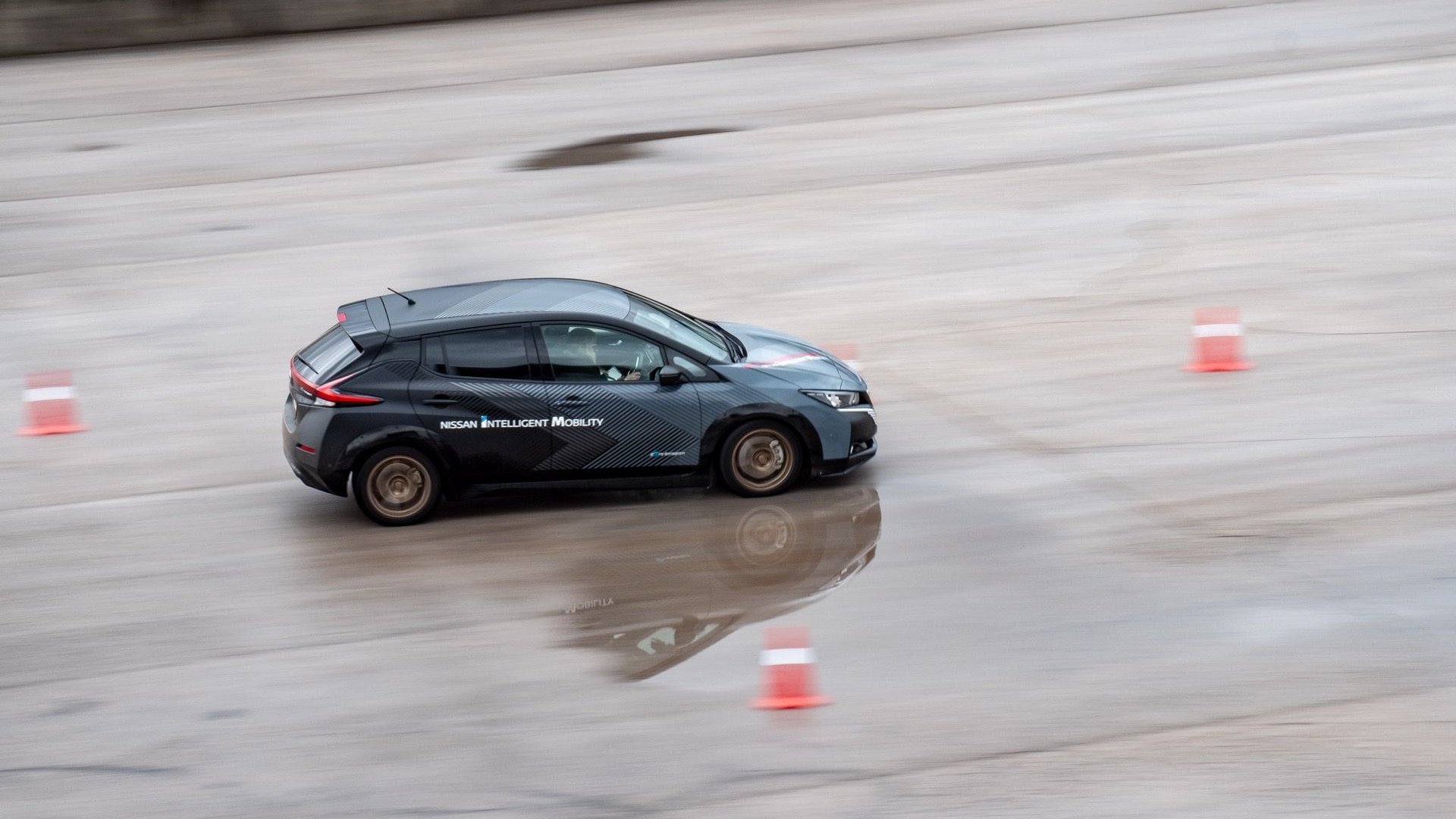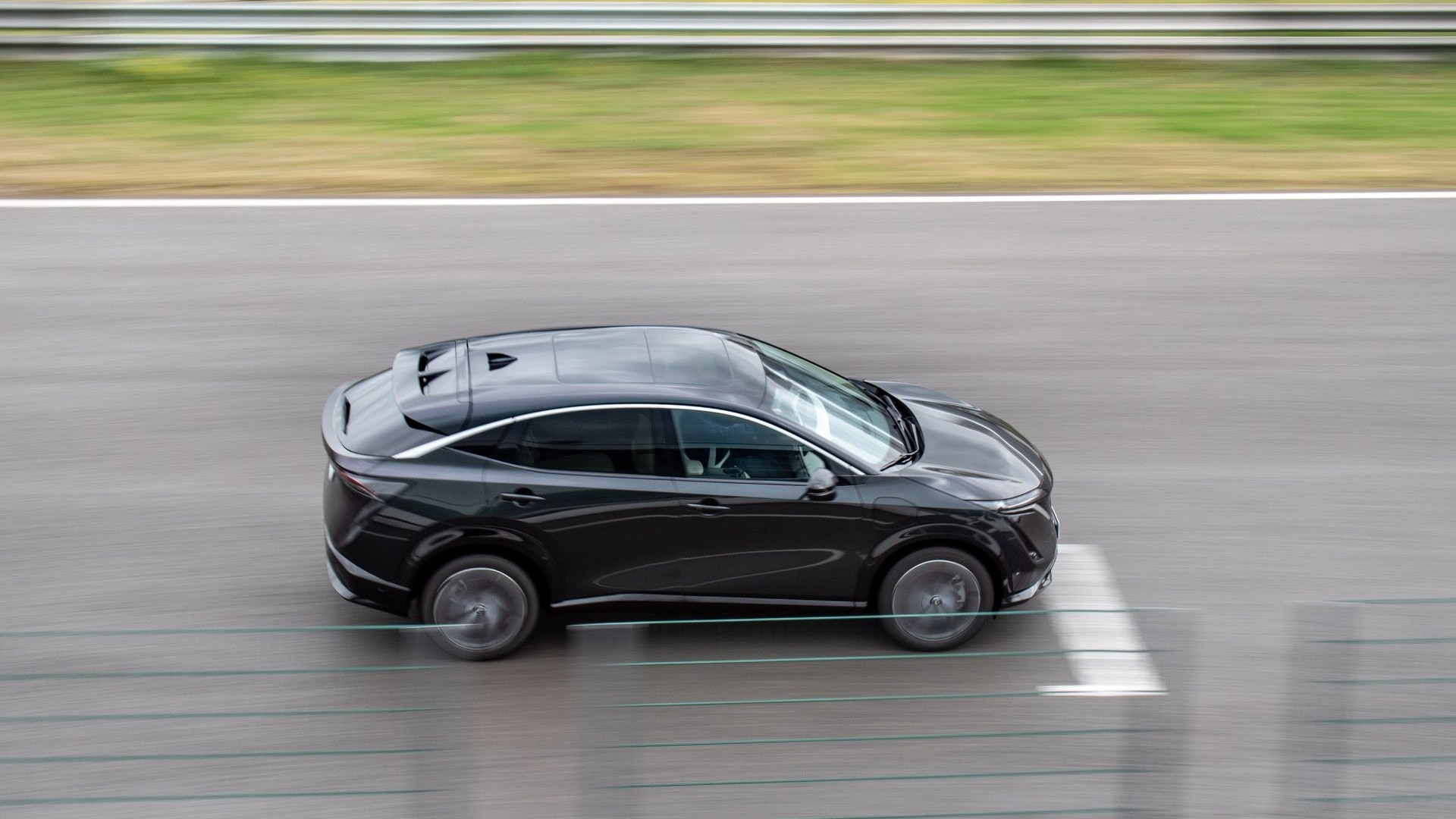Our first time in the driver’s seat of the 2023 Nissan Ariya missed out on the star of the lineup: the company’s dual-motor all-wheel-drive system, augmented by a next-generation chassis system called e-4orce.
Although e-4orce is technology for electric vehicles, it draws from tuning expertise from the all-wheel-drive GT-R supercar. With EVs and their faster-reacting propulsion components, e-4orce can modulate and coordinate a complete response of both the dual electric motors and the four individual wheel brakes in tens of milliseconds rather than hundreds of milliseconds.
The aim isn’t just to provide enhanced traction and stability, but to work the physics at all four wheels to help adjust the attitude of the vehicle to prevent lift during hard acceleration, nosedive during deceleration, and balance while cornering.
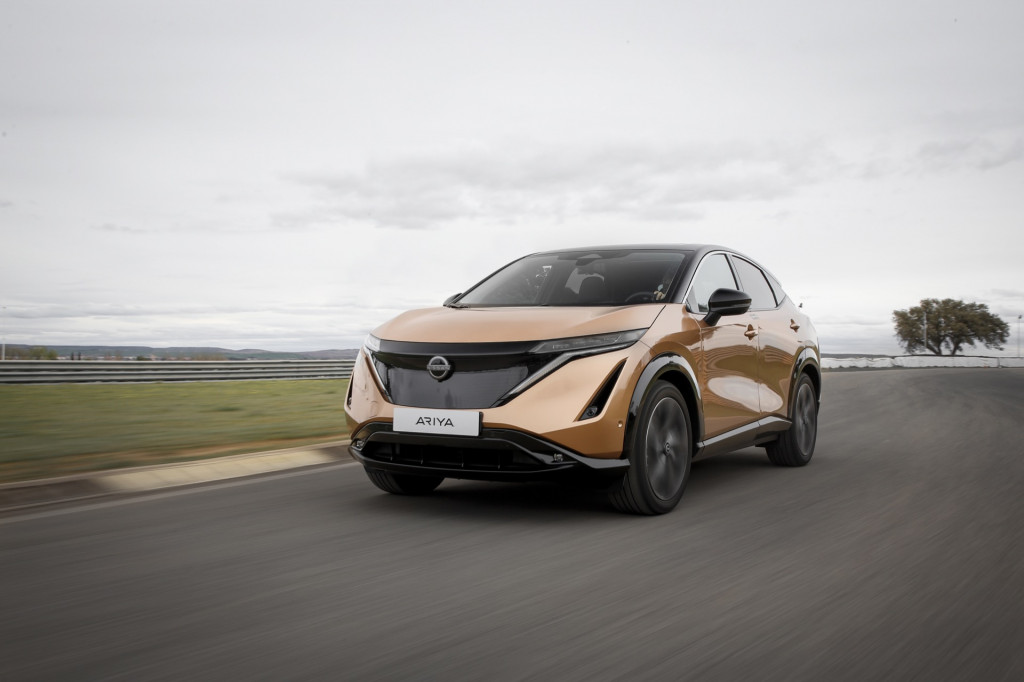
2023 Nissan Ariya - preview drive (Euro spec)
As I observed in a closed-course preview drive of the Ariya earlier this week, this electric crossover is by no means clumsy in front-wheel-drive form, but it promises to be far more nimble in e-4orce form.
Due partly to supply-chain hurdles, e-4orce versions of the Ariya will arrive in late fall, versus early fall for front-wheel-drive versions. While Nissan didn’t have a production-spec Ariya e-4orce model to drive, the company brought back a familiar e-Force face—a Leaf demonstrator installed with a version of the system that can be switched on and off.
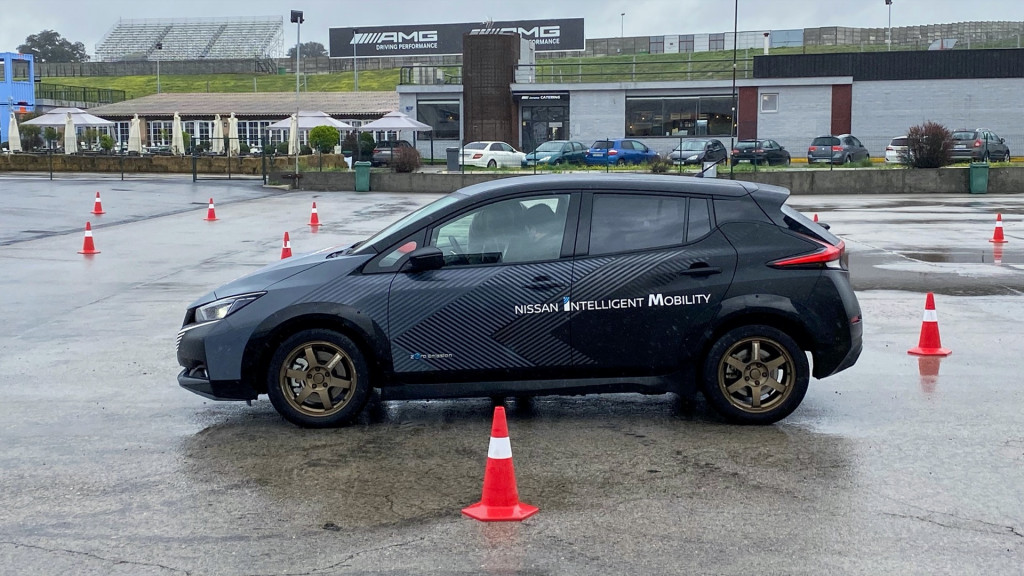
Nissan Leaf e-4orce demonstrator - updated to represent 2023 Ariya e-4orce
This demonstrator is the same car we drove in January 2020, albeit updated to represent the final-form software used in the Ariya e-4orce.
Fundamentally, in this dual-motor “Super Leaf,” the layout is much like what will be featured in the Ariya e-4orce, with dual motors and open differentials at each axle.
I hopped in the driver’s seat with a technician to switch the system on and off, and refreshed myself on the idea.
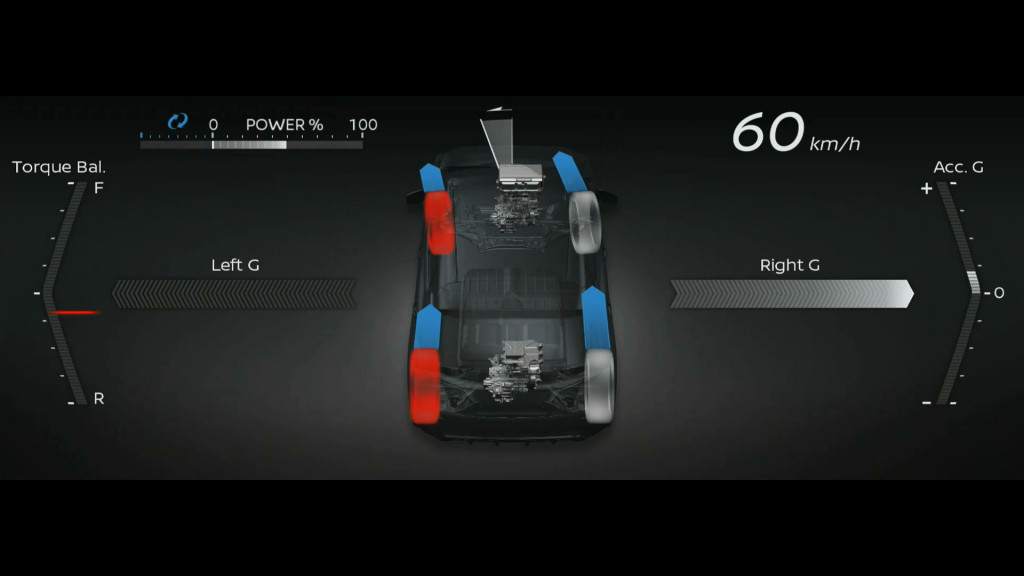
Nissan e-4ORCE electric all-wheel-drive system
Nissan first had me accelerate and decelerate at city speeds in the B setting, which provides more regenerative braking, to show that the system works subtly at the wheels—even reapportioning brake regen—to help keep the car level even when you’re well short of pushing the limits of tire traction. I performed the exercise once with standard stability control, then with e-4orce, and found the car felt flatter with e-4orce, with the potential to use more regen without upsetting passengers.
It’s not a subtle difference, like the creeping jetlag I was experiencing during the mid-morning drive in Spain; it’s like night and day.
Next up was a series of curves. The first was a tighter curve taken at about 25 mph, then an S-curve set for about 37 mph. The system intervenes in such subtle fashion that you might not even realize what it’s doing. However, the net result is that you can corner quicker, without feeling like the cabin is pitching back and forth.
During my demo drive, a near downpour left a sheen of shallow puddles over the entire course. As I pushed harder with the system on, I could feel it not just managing traction at the wheels but dialing the weight balance of the car back away from the plowing front wheels.
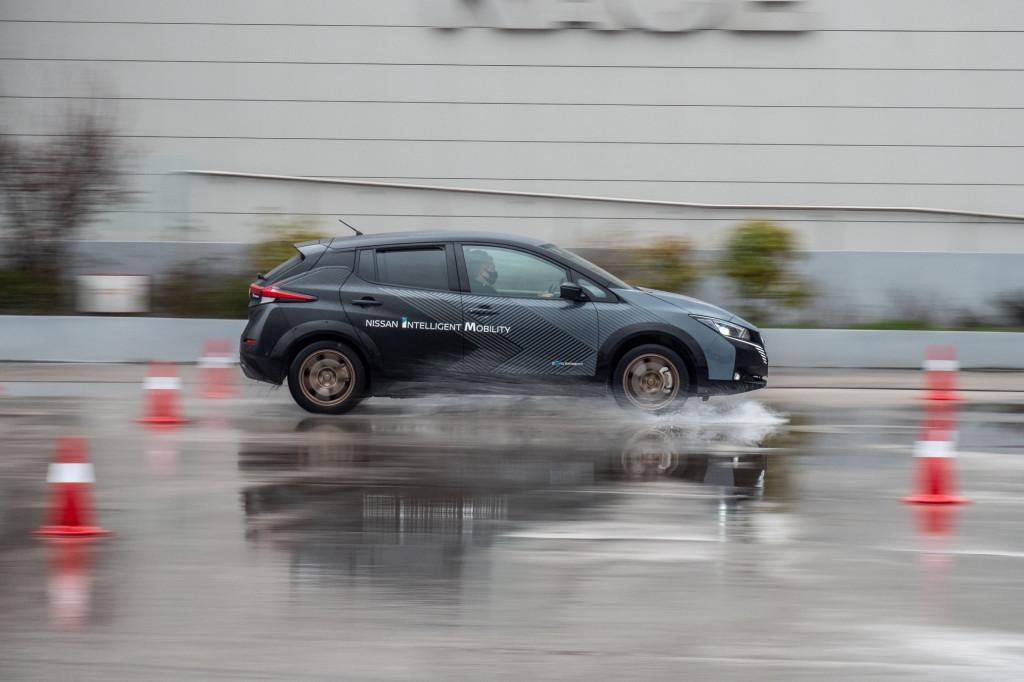
Nissan Leaf e-4orce demonstrator - updated to represent 2023 Ariya e-4orce
The net takeaway is that you can enjoy the Ariya’s dynamics—or a more aggressive brake-regen setting—without a clumsier ride the rest of the time, and without upsetting your passengers.
It should also be noted that e-4orce works without the energy draw or added componentry of an air suspension or adjustable dampers.
To help the physics behind the idea resonate, Nissan recently built a version of the system into a small, dual-motor server tray used at a ramen counter. It shows how the nuanced control of the dual motors can deliver bowls of noodles and broth quickly to customers without sloshing or spilling.
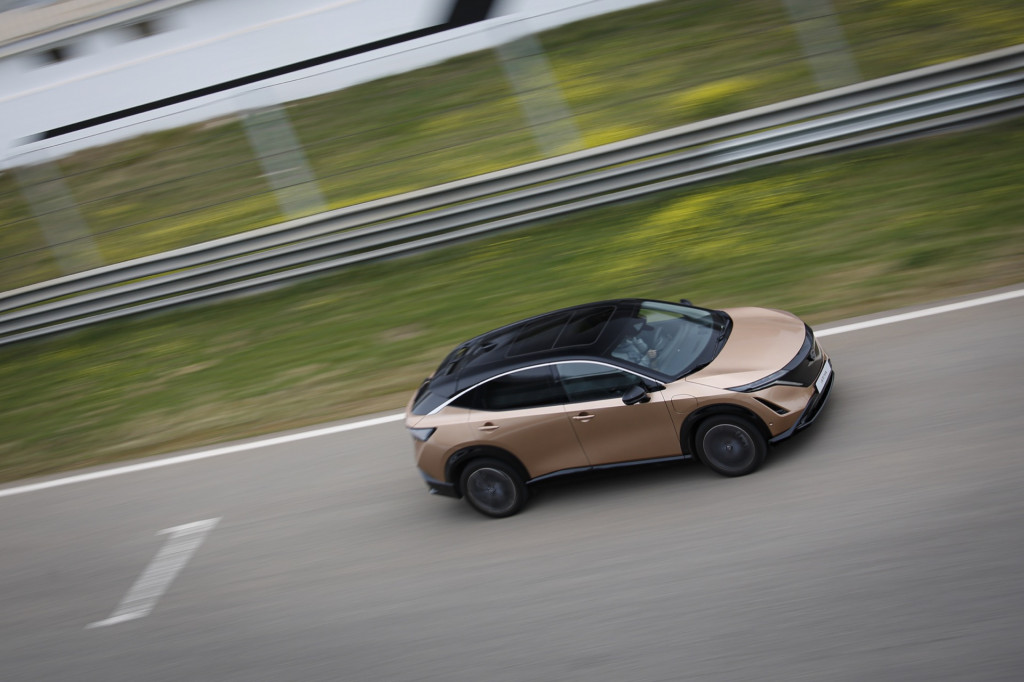
2023 Nissan Ariya - preview drive (Euro spec)
This demo was no substitute for experiencing the system in the Ariya, however. There are some key differences between this demonstration car and what we’ll see in the Ariya in component details. While the demo Leaf adds a second EM57 permanent-magnet (PSM) motor at the rear wheels—the stock motor for the Leaf—and it’s based entirely on existing Leaf propulsion components, the Ariya will be powered by an Externally Excited Synchronous Motor. This design creates the field with applied current instead of rare-earth-dependent magnets. As Nissan told us, that makes it more efficient at highway speeds, but not quite as punchy off the line as the PSM units.

Nissan CMF-EV platform
The Ariya's CMF-EV platform is also designed around a new communication bus that should make e-4orce’s reactions faster and more fluid. Nissan has installed an auxiliary processor to replicate the system’s responses, but we were previously told it’s not quite the same.
The Ariya also probably weighs about 500 lb more in its 87-kwh e-4orce Performance form than the Leaf demonstrator, which Nissan previously said adds up to 200 lb versus a front-wheel-drive Leaf Plus, for a total of about 4,200 lb. To compare, the top-trim front-wheel-drive Ariya we drove, with the smaller 63-kwh battery pack, was estimated to weigh about 4,300 lb.
Bottom line: Nissan is doing some very cool things with all-wheel drive and its dual-motor system, and it actually builds on technology originally designed for internal combustion. But there’s no substitute for a real-world demo in an actual Ariya e-4orce. We’re hoping to bring you apples-to-apples impressions of the system in an Ariya before it arrives in late fall.
